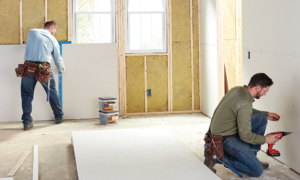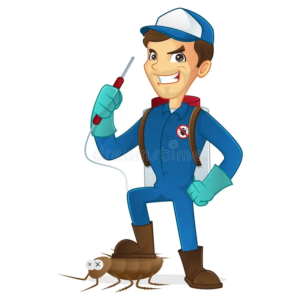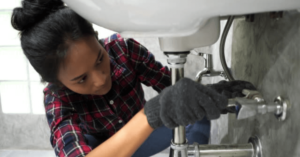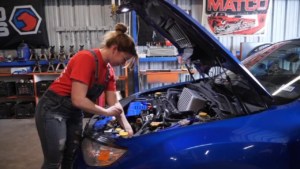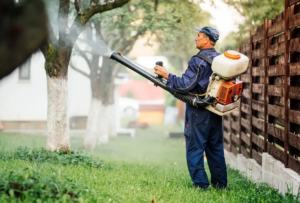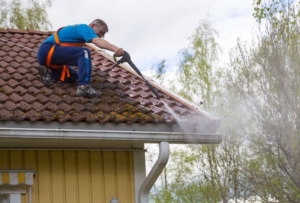Many different situations constitute a roofing emergency, from a sudden gush of water to extensive storm damage. Taking quick action can protect your home and save you money.
Before you call a contractor, carefully inspect the area needing repair. Look for signs of water infiltration, such as damp stains or peeling paint. Click the Emergency Roofing Columbus GA to learn more.

One of the most common roofing emergencies involves significant leakage. This problem presents a number of serious challenges, including moisture intrusion, structural damage, and mold development. Identifying leaks early on and taking effective action helps minimize damage and safeguard property investments. To prevent further problems, homeowners should focus on locating the source and implementing temporary solutions until comprehensive repair takes place.
Leaks require immediate attention because of the impact they can have on a home’s interior. In addition to causing water intrusion and mold development, they can also result in structural damage, electrical hazards, and expensive repairs. Thankfully, there are a few things that can be done to minimize the impact of a roof leak, such as installing tarps and employing emergency cement patches.
Homeowners should always prioritize safety when addressing roof leaks. This includes evaluating personal safety and identifying structural weaknesses that could fall or shift under pressure. Additionally, ensuring that electrical systems are turned off in areas affected by water penetration reduces the risk of fire and injury.
Identifying the source of a leak is a crucial step for emergency roof repair, as it allows homeowners to take action to control the situation and limit damages. In many cases, this will involve inspecting the attic or safely climbing onto the roof to assess the damage. Once the source is identified, homeowners can use emergency patches and tarps to cover damaged areas temporarily until comprehensive repair can be scheduled.
A major leak is a clear sign that it’s time for professional help. Homeowners should seek emergency assistance from a local roofing company that offers Bergen County roof repair and installation services. The contractor can provide an inspection and recommend a long-term solution.
To prevent future leaks, homeowners should perform regular roof maintenance and conduct periodic professional inspections after storms and severe weather events. The preventive measures include regularly checking the attic, assessing the condition of shingle flashing, and trimming back overhanging tree branches. This helps ensure that the roofing system is in good shape and protects the property investment. A professional inspection also helps identify any issues that may arise, such as leaks and weakened shingles, before they become a serious problem.
Storm Damage
There are a number of different ways that your roof can be damaged in the event of a severe storm. This can include everything from holes to sagging or even collapse. If you notice that your roof has been affected by the elements, it’s essential to call a professional roofing team immediately. Waiting to call for emergency repair can result in costly structural damage and water leaks that compromise the integrity of your home.
There Are Several Steps in Handling Emergency Roofing
Before calling a roofing contractor for emergency repairs, it’s important to assess the situation and take steps to protect your property and prevent further damage. First, prioritize safety by determining whether it is safe to remain in the house. This will help you determine if there is a risk of structural collapse or electrical risks from water infiltration. If necessary, evacuate the area or close off areas of the house that are at risk of collapsing or flooding.
Next, try to minimize damage by covering any open leaks with tarps and placing buckets or other containers under them to collect the water. This will help prevent further water intrusion into your home and will also save you money by reducing the cost of future repairs. Finally, call a roofing contractor for immediate roof repairs and document all visible damage with photos and notes for insurance purposes.
When choosing a roofing contractor for emergency roof repair, it’s best to choose one with extensive experience in the industry and a reputation for providing high-quality work. An experienced roofing company can identify hidden problems and deliver long-lasting fixes that DIY solutions can’t match. They can also guide you through the insurance claims process, ensuring that your claim is approved and covers as much of the costs as possible. To find a local roofing company, search for online reviews or check your local directory listings for customer feedback. It’s also a good idea to ask friends or family for recommendations based on their experiences.
Falling Objects
A damaged roof puts your entire home at risk. The presence of water leaks can damage ceilings, drywall, and electrical systems, while mold growth can pose health threats for family members. In addition, high winds can rip off roofing materials, leaving your house exposed to the elements. Emergency roofing services offer a range of repair options that can protect your home during severe weather conditions.
Whether your roof was damaged by a fallen tree or an unexpected summer storm, having an emergency service available to address any issues that occur can save you time, money, and stress. Understanding what constitutes a roofing emergency can help you understand when to call in a professional. Emergency Roofing experts can provide temporary roof patches that stop leaks, patch holes in your roof, and protect your home from further damage.
Leaks and structural weaknesses are two of the most common reasons homeowners call for emergency roof repairs. When water seeps into your attic or the ceiling of your home, it can lead to rot and mold, while also creating a breeding ground for insects and vermin. In addition, the presence of water can compromise the integrity of your roof and put your whole home at risk of collapse or fire.
Inspecting for signs of water intrusion can help you identify structural problems in your roof, such as sagging areas or cracks. If you notice these issues, it is important to contact your emergency roofing service immediately to schedule a roof inspection.
During your roof inspection, an experienced technician can identify the root of the problem and determine what types of emergency roofing repair services you will need. A professional will also recommend any preventative maintenance that can help you avoid future emergencies and keep your home protected from the elements.
Performing yearly roof maintenance is an excellent way to avoid major roofing emergencies. However, even the most careful homeowner may experience a roofing emergency at some point. When this occurs, you need to know what to do and when to call a roofing professional to prevent further damage.
Damaged Shingles
The roof is one of the most vulnerable parts of your home. It protects you from harsh weather, pests and even fire, but it can be damaged in a variety of ways that require immediate repair.
Storms, a lack of routine maintenance and other unexpected circumstances can lead to emergency roofing problems. Identifying the problem, taking action and following emergency roofing tips can prevent serious damage to your home and minimize your risk.
Some roofing emergencies are best left to professional roofers who have the proper equipment and skills for the job. However, there are some steps you can take while waiting for the professionals to arrive that may help. First, prioritize safety and evacuate the area if structural damage is apparent or there is a risk of electrical issues from water intrusion. Then, attempt to contain the leaks using buckets or containers and towels or rags to soak up excess moisture. If possible, tarps or plastic sheets can be used to cover leaks and protect areas that are most exposed.
Extensive shingle loss, particularly in a concentrated area, can leave your roof exposed to additional damage during future weather events and expose the structure of your home to potential mold or mildew. This type of problem can also be exacerbated by water that seeps into the attic and ceiling, weakening it over time. If you think your shingles have been compromised, contact a roofing contractor for emergency repair as soon as possible to avoid further damage and costly repairs later on.
While regular roof maintenance can prevent some kinds of roofing emergencies, many of these problems still occur due to unpredictable weather and the wear and tear of age. Knowing what constitutes a roofing emergency and taking action quickly can reduce the stress on your home and budget. For the best results, call a local roofer for prompt emergency repairs. They can inspect and evaluate your roof, recommend a long-term solution and provide quick repairs to ensure your family’s safety and peace of mind.

